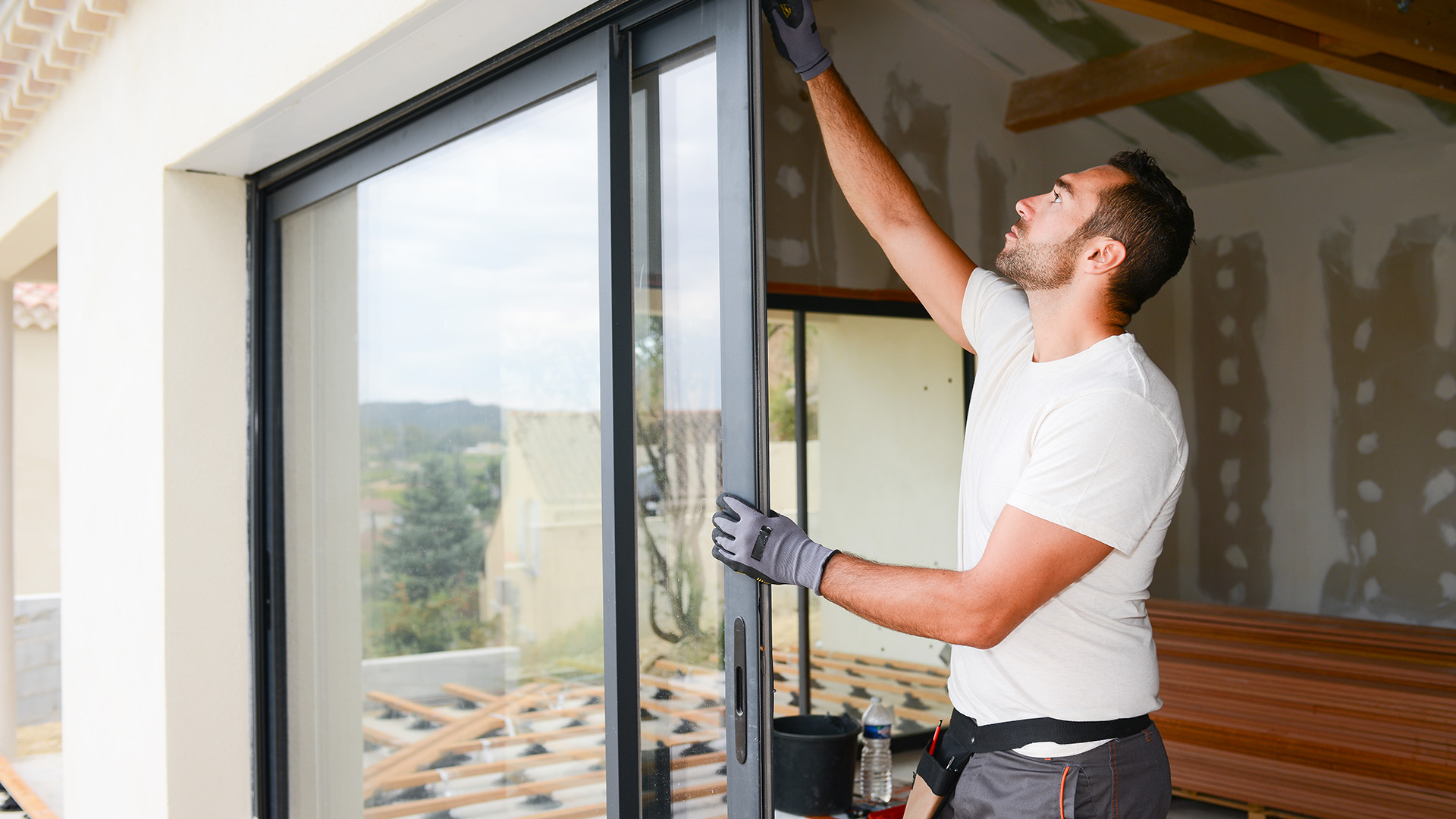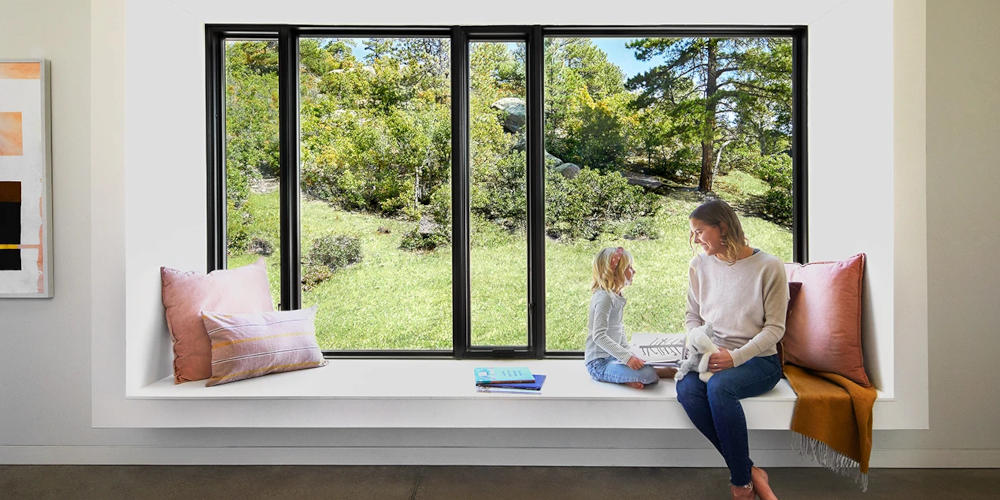As climate change accelerates, homeowners are increasingly seeking ways to reduce their carbon footprint and embrace sustainable living. Smart home technology and energy-efficient windows offer powerful tools to lower energy consumption and greenhouse gas (GHG) emissions, paving the way for eco-friendly homes and even net-zero living. By integrating these technologies, households can achieve significant energy savings, enhance comfort, and contribute to global decarbonization goals. This article explores how smart home tech and energy-efficient windows reduce energy use, highlights recent studies on their impact, and provides practical tips for homeowners aiming for net-zero living.
The Carbon Footprint of Homes
Residential buildings are a major contributor to global GHG emissions, accounting for approximately 20% of emissions in the UK and 30% worldwide, with household energy use responsible for one-third of global CO2 emissions. Heating, cooling, and electricity consumption for appliances and lighting drive these emissions, making energy efficiency a critical strategy for reducing environmental impact. Smart home technology and energy-efficient windows address these high-energy areas, offering measurable reductions in energy use and emissions while aligning with global targets like the Paris Agreement’s goal to limit warming to 1.5°C.

How Smart Home Technology Lowers Energy Use
Smart home technology encompasses devices like smart thermostats, lighting, power strips, and energy management systems that optimize energy consumption through automation, real-time monitoring, and user behavior insights. These technologies reduce energy waste, shift usage to off-peak times, and integrate renewable energy sources, significantly lowering household carbon footprints.
-
Smart Thermostats: Devices like Google Nest or Ecobee learn user schedules and adjust heating and cooling to minimize energy use. They use motion sensors to detect occupancy and can reduce energy consumption by 10–15% annually, saving 1–2 tonnes of CO2 per household per year in colder climates. A 2021 Finnish study found that home automation, including smart thermostats, reduced emissions by 12.78% through peak load shifting and optimized heating.
-
Smart Lighting: LED smart bulbs with motion sensors or scheduling features use 35% less energy than traditional lighting, preventing up to 200 million tons of CO2 emissions annually if widely adopted in the US. Smart lighting systems, like Philips Hue, dim or turn off lights in unoccupied rooms, saving households $100–$200 per year on electricity bills.
-
Smart Power Strips: These devices cut power to idle electronics, reducing “phantom” energy use, which accounts for 5–10% of household electricity. A single smart power strip can save $42 annually and reduce CO2 emissions by 50–100 kg per year.
-
Energy Management Systems: IoT-based systems monitor real-time energy use, providing data to optimize appliance schedules and integrate solar panels. A 2025 study noted that AI-driven energy optimization in smart homes can reduce consumption by 15–20%, with potential for 90% renewable energy use when paired with solar systems.
By automating energy-intensive tasks and providing actionable insights, smart home tech empowers homeowners to cut energy waste without sacrificing comfort. For example, programming dishwashers or washing machines to run at night during off-peak hours reduces grid strain and emissions, as noted in a UK study projecting an 11% contribution to 2050 carbon targets through household efficiency measures.
Read more: Are UV-Blocking Awnings Worth The Investment? A Cost-Benefit Analysis
The Role of Energy-Efficient Windows
Energy-efficient windows, featuring double- or triple-pane glass, low-emissivity (Low-E) coatings, and insulating gases like argon or krypton, minimize heat transfer, reducing heating and cooling demands. These windows are a cornerstone of energy-efficient home design, offering substantial savings and emissions reductions.
-
Energy Savings: According to the U.S. Department of Energy, energy-efficient windows can reduce HVAC energy use by 20–30%, saving $125–$400 annually on utility bills depending on climate. In the UK, upgrading to double-glazed windows with Low-E coatings can lower energy consumption by 15–25%, cutting 0.5–1 tonne of CO2 per household annually.

-
Emissions Impact: A 2023 study in England and Wales found that retrofitting homes with energy-efficient windows and insulation could reduce residential energy use by 29%, saving £10–20 billion yearly and avoiding emissions equivalent to 1.2 times the UK’s 2022 per capita carbon footprint (10 tonnes CO2 per person).
-
Longevity and Value: Modern windows with vinyl or fiberglass frames last 20–40 years, compared to 10–20 years for single-pane windows. They also increase home value by 3–5% and improve comfort by reducing drafts and noise, making them a cost-effective retrofit.
By preventing heat loss in winter and heat gain in summer, energy-efficient windows reduce reliance on fossil fuel-based HVAC systems, directly lowering GHG emissions. For example, a home in Vermont upgrading to triple-pane windows could cut heating-related emissions by 20%, a significant step toward net-zero goals.
Read more: What To Offer On A Used Car: A Buyer’s Guide To Smart Negotiations
Synergy of Smart Tech and Windows
Combining smart home technology with energy-efficient windows maximizes energy savings and emissions reductions. Smart thermostats optimize HVAC performance in homes with energy-efficient windows, ensuring minimal energy is used to maintain comfort. For instance, a 2024 case study showed that homes with smart thermostats and double-glazed windows reduced energy consumption by 35% compared to homes with standard windows and manual thermostats. Smart window treatments, like automated blinds, further enhance efficiency by adjusting to sunlight, reducing cooling needs by 10–15%.
Recent Studies on Impact
Recent research underscores the potential of these technologies:
-
Finnish Study (2021): Home automation reduced emissions by 12.78%, with peak shifting contributing significantly.
-
UK EPC Study (2023): Retrofitting homes to improve Energy Performance Certificate (EPC) ratings with windows and smart tech could save 29% in energy, with a 6–7 year payback period.
-
IEA Report (2022): Energy efficiency measures, including smart tech and windows, could reduce global energy-related GHG emissions by 12% by 2040, delivering 40% of Paris Agreement abatement needs.
-
Google Nest Renew (2021): Smart thermostats communicating with clean energy grids could remove 50 million metric tons of CO2 annually if adopted by 10 million households.
These studies highlight that smart home tech and energy-efficient windows are not just incremental improvements but critical components of achieving net-zero emissions by 2050.
Tips for Homeowners Aiming for Net-Zero Living
Achieving a net-zero home—where energy production equals consumption—requires strategic investments and lifestyle changes. Here are practical tips to leverage smart home tech and energy-efficient windows:
- Conduct an Energy Audit: Hire a professional to assess your home’s energy use, identifying areas for improvement like leaky windows or inefficient HVAC systems. Audits cost $200–$500 but can save thousands long-term.
- Upgrade to Energy-Efficient Windows: Replace single-pane windows with double- or triple-pane models featuring Low-E coatings. Check for local rebates or tax credits, which can offset 10–30% of costs.
- Install Smart Thermostats and Lighting: Start with a smart thermostat ($100–$250) and LED smart bulbs ($10–$20 each). Schedule devices to operate during off-peak hours to maximize savings and reduce grid emissions.
- Integrate Solar Panels: Pair smart home systems with rooftop solar panels to generate renewable energy. A 2024 study showed households with solar and smart tech used 90% renewable energy, cutting emissions by 80%. Costs range from $10,000–$20,000, but incentives can reduce payback to 5–10 years.

- Use Smart Meters: Install a smart meter to monitor real-time energy use and receive tips for reducing consumption. In the UK, smart meters contribute to 11% of 2050 carbon targets.
- Add Insulation: Complement windows with wall and attic insulation to reduce heat loss by 20–30%, amplifying energy savings. Costs average $1,500–$3,000 but save $200–$500 annually.
- Consider Smart Appliances: Upgrade to ENERGY STAR-rated appliances like dishwashers or washing machines, which use 30–50% less energy and water. Schedule them for off-peak use via smart apps.
- Explore Financial Incentives: Research government grants, tax credits, or low-interest loans for energy efficiency upgrades. In Vermont, residents can access state credits for solar and retrofits.
- Adopt Bioclimatic Design: Use natural light and ventilation to reduce reliance on artificial systems. Position windows to maximize daylight and install overhangs to minimize summer heat gain.
- Engage in Community Initiatives: Join local net-zero programs or share your progress to inspire neighbors, amplifying collective impact. Gamification of energy savings, as noted in a 2021 study, boosts adoption.
Challenges and Considerations
While these technologies offer significant benefits, challenges include high upfront costs ($2,000–$20,000 for windows or solar), installation complexity in older homes, and user skepticism about smart tech reliability. A 2024 survey found 49% of homeowners cited cost as a barrier to smart home adoption. However, long-term savings, rebates, and increasing affordability are overcoming these hurdles. Homeowners should prioritize upgrades based on budget and impact, starting with audits and low-cost solutions like smart bulbs.
Conclusion
Smart home technology and energy-efficient windows are transformative tools for reducing household energy use and GHG emissions, offering savings of 15–35% and cutting 1–2 tonnes of CO2 per year per home. Supported by studies showing their role in achieving global climate targets, these technologies are essential for net-zero living. By combining smart thermostats, lighting, and energy management with high-performance windows, homeowners can create sustainable, comfortable homes while contributing to a low-carbon future. With practical tips like energy audits, solar integration, and leveraging incentives, anyone can start the journey to net-zero, making a tangible impact on climate change one home at a time.


.jpg)










